Asko Takala
Asko Takala (FI)
Kirsti Sivén & Asko Takala architects
Asko Takala (FI), architect, partner Korkeavuorenkatu 25 A 5, 00130 Helsinki – Suomi/Finlandtoimisto@arksi.fi
www.arksi.fi
Facebook Kirsti Sivén & Asko Takala architects

Asko Takala
When did you win Europan? On which sites and in which countries? How was the team formed by then? Please describe the main ideas of your projects?
Europan 4, Linköping (SE), Winner - "Open District"
Team: Asko Takala
I won Europan 4 Linköping, Sweden 1996. The light nature of the competition made possible to do it just by myself – on my spare time and testing my ideas of better daily architecture in an alternative context – from a Finnish perspective.
The plot was a relatively flat old parking place with some oak trees – in fact a left over corner of a low 1-2 floor health care complex dating from 1950’s. The site is bordered by two streets and an oak-wooded hill with some prehistoric (Viking time) remains.
The idea of the project is derived from the local dualism of scale and structure, the prehistoric past and modern Nordic society features. The heart of the development is the common open and fluctuating green space opening to the oak-wooded hill. The simple-volume housing zone is separated from the straight streets by service-activities lined with artificial earth-made noise barriers. Paths cross the area for different needs, interests and feelings. The border between housing and central space is vague and flexible.
The building design is based on interpretation and flexibility in a simple and strong frame. Buildings are implemented with sustainable materials in order to create warm, safe and familiar living environment at reasonable building and maintenance costs.
On the competition phase the materials were based on the surrounding buildings: yellow brick facades with red brick roofing and wooden balconies impregnated with a mixture of tar and flax oil.
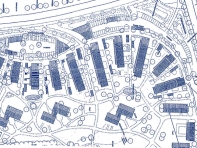 E4 Linköping (SE) – Site © Asko Takala
E4 Linköping (SE) – Site © Asko Takala
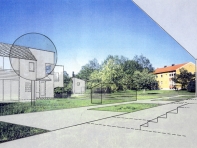 E4 Linköping (SE) – Perspective © Asko Takala
E4 Linköping (SE) – Perspective © Asko Takala
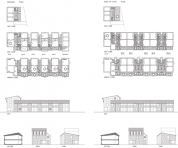 E4 Linköping (SE) – Row houses + block of flats © Asko Takala
E4 Linköping (SE) – Row houses + block of flats © Asko Takala
Did your projects have any follow-up? If yes, which one and how? Did this step have a learning effect for you as far as the process is concerned? If yes, which one? If not, why did the projects not go further?
The competition leaded to implementation – the economical conjunctures made the process 9 years long. In the beginning there were four silent years – I got a short message once a year from the client. I also invited the client to Finland to visit our built projects and other current Finnish housing projects.
Finally in 2000 the client and Linköping Municipality started the project by town planning process hand in hand with building design following the competition entry. The client introduced a local collaborating architect, Anders Falk, who had worked in Finland earlier. The detail plan and the building design were ready in 2001.
The project was renamed ”Lilla Åleryd” (”Tiny/Small Åleryd”). Some adjustments were made for the program and because of the cost efficiency. The most visible conversion was the changing of the facade and roof materials. Finding out that the architect was from Finland, the client had almost instantly proposed converting yellow brick facades to wooden cladding – and building a sauna. The proposed horizontal yellow panelling referred to brick layers, though the client associated it first with summer cottages. The brick roofing was changed to red coated sheet metal - and the project became all timber construction.
Once again economic recession, building costs and marketing did not meet, and the project was frozen.
In the year 2003 the client made the last try and introduced a construction firm and a project leader from collaborating architect office. The project was still simplified; volumes and the façade concept were re-developed. Also the three-floor apartments demanded some adaptations to fire regulation.
And then the project was finally built. The local architect carried out most of the execution drawings following my general design. The site was completed autumn 2006.
The whole process gave a lot to think and learn: the differences and similarities between two neighbour countries in town planning, construction, living culture and architect profession. I am very grateful to the client and other collaborators for the trust and support through the years.
The people living in and around welcomed the project warmly and soon they named the buildings as “the Giraffe Houses”.
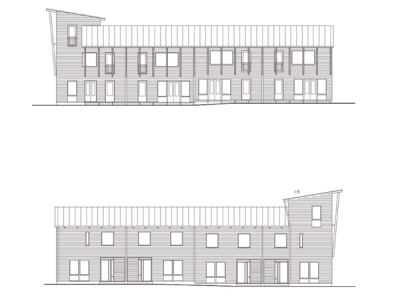 Linköping (SE) – Garages © Asko Takala
Linköping (SE) – Garages © Asko Takala
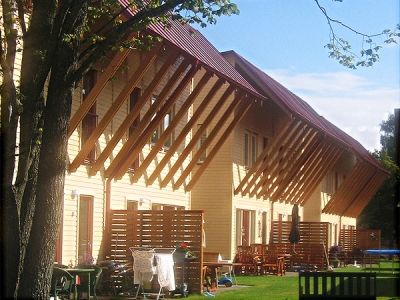 Linköping (SE) - Façade and roofing © Oscar Lüren
Linköping (SE) - Façade and roofing © Oscar Lüren
Did winning Europan launch the creation of a professional structure and if so, which structure and with whom?
Winning Europan did not exactly launch any professional structure, but it did encourage and strengthen my career. I had been so called silent partner in my wife´s office for years, but in 2004 we changed the form of the office to a limited company having both names: Kirsti Sivén & Asko Takala Architects. In 1996 we were eight people in the office. We are now between 15 and 20 people.
The winning opened also possibilities to work as a jury member in architectural competitions, first in Europan 5 Finland-Estonia. Later I have been also member of the Competition Committee among other professional activities in the Finnish Association of Architects (SAFA)
Did winning Europan have a label effect for you after the competition (acknowledgement by clients, call to participate to competitions or direct order)? If yes, how? Do you feel being part of a “Europan generation” and if so, why?
Europan did not and does not give so much label effect in Finland, partly because we already have a strong and active national competition system opening doors for young architects and even students. But Europan has meaning as one alternative way of testing things and getting recognition. That is why I highly recommend young architects to take part – especially abroad. Do not freeze at home!
Another positive point is the technically lighter nature of Europan competition programs. The programs are usually more open and tolerant than in locally or nationally arranged competitions. The competitions may open various visions toward the future of the society, locally and globally.
I do not feel being part of the “Europan Generation” because of any age or some generation experience. I feel being part of this legacy because Europan still gives opportunities to test and benchmark ideas - and make friends - across Europe.
Did the issue developed in your winning project act as a baseline for the later development of your work? If yes, how? And more specifically in which projects –implemented or not?
The Europan 4 project in Linköping opened and confirmed some baselines in my work and our office practice. Sustainability is never taken as a pure technical issue. It always has social, mental and aesthetic dimensions.
Ecology & Typology
Right after the competition, in 1996, we were involved in a design and construction competition for the experimental ecological Eko-Viikki area in Helsinki. Our project received a prize and we completed four housing units to the Eko-Viikki between 1999 and 2004. Two of the building typologies were related to the Europan competition. The Eko-Viikki low-rise unit Ahomansikka was finally chosen to the Finnish Architecture 04-05 Biannual Exhibition.
Landscape & Low-rise
The idea of open and fluctuating space and landscape has been developed in several competitions and other projects. The winning entry of the invited town planning competition of Leinelä 2 in Vantaa is a more developed example of the approach. Unfortunately there has not been any implementation yet because the land owner (local congregational consortium) has been looking for more conventional partners – building companies.
Versatile Housing
The systematic flexibility and open nature of individual apartments is always present in our projects. The Harjunkulma block in Jyväskylä was built in six phases between 2005 and 2014. In this large and ambitious project the only bonding agents were the designers. All other shareholders changed during the building years. Peter Zumthor made the original master plan. Our office was invited to interpret the concept of a vast single glass box and a green park-like courtyard within the limited conditions. The Harjunkulma block was among the projects presented in the Nordic Pavilion exhibition “In Therapy – Nordic Countries Face to Face”, Venice Architecture Biennale 2016.
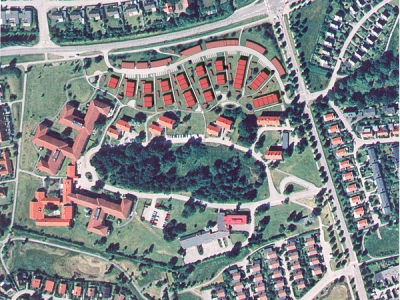 Linköping (SE) – Site – Final plan © Asko Takala
Linköping (SE) – Site – Final plan © Asko Takala
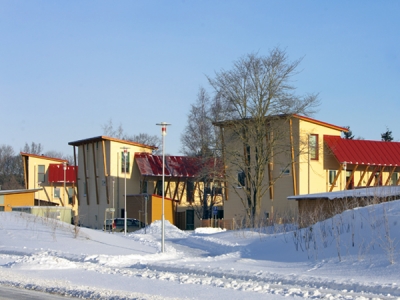 Linköping (SE) – Blocks of flats © Oscar Lüren
Linköping (SE) – Blocks of flats © Oscar Lüren
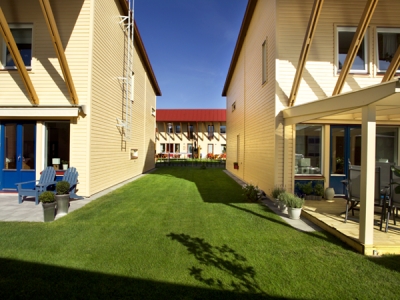 Linköping (SE) – Row houses © Oscar Lüren
Linköping (SE) – Row houses © Oscar Lüren
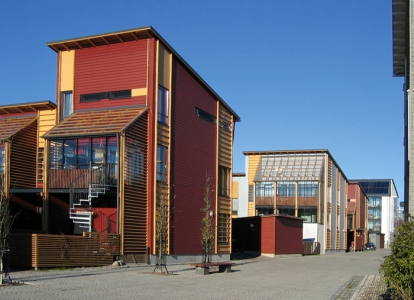 Helsinki (FI), 1996-2004 – Eko-Viikki project © Asko Takala
Helsinki (FI), 1996-2004 – Eko-Viikki project © Asko Takala
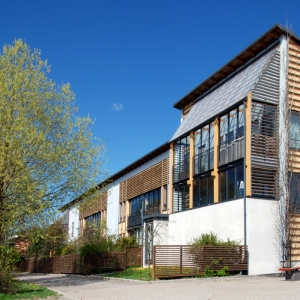 Helsinki (FI), 1996-2004 – Eko-Viikki project © Asko Takala
Helsinki (FI), 1996-2004 – Eko-Viikki project © Asko Takala
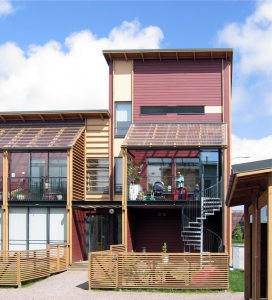 Helsinki (FI), 1996-2004 – Eko-Viikki project © Asko Takala
Helsinki (FI), 1996-2004 – Eko-Viikki project © Asko Takala
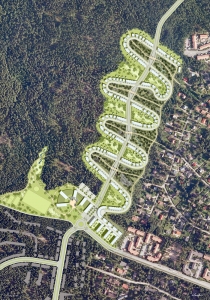 Vantaa (FI), 2008 – Leinelä 2 project © Asko Takala
Vantaa (FI), 2008 – Leinelä 2 project © Asko Takala
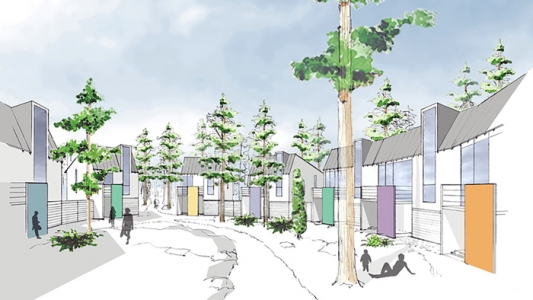 Vantaa (FI), 2008 – Leinelä 2 project © Asko Takala
Vantaa (FI), 2008 – Leinelä 2 project © Asko Takala
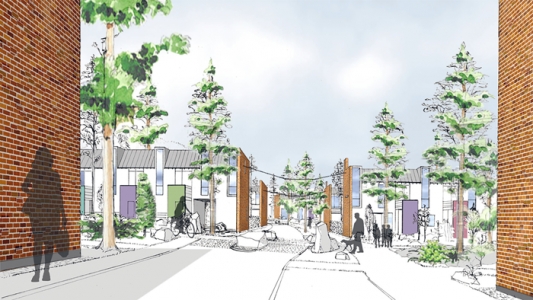 Vantaa (FI), 2008 – Leinelä 2 project © Asko Takala
Vantaa (FI), 2008 – Leinelä 2 project © Asko Takala
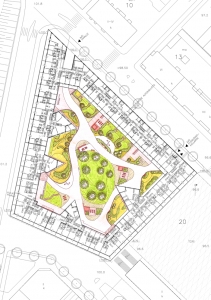 Jyväskylä (FI), 2007-2014 – Harjunkulma
Jyväskylä (FI), 2007-2014 – Harjunkulma 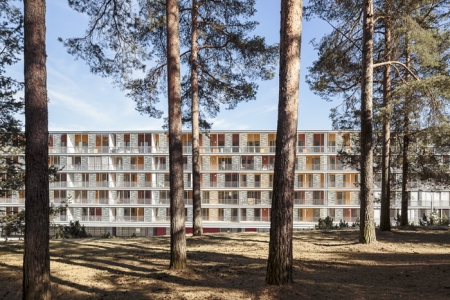 Jyväskylä (FI), 2007-2014 – Harjunkulma block © Tuomas Uusheimo
Jyväskylä (FI), 2007-2014 – Harjunkulma block © Tuomas Uusheimo
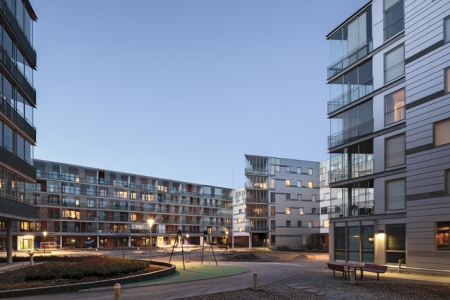 Jyväskylä (FI), 2007-2014 – Harjunkulma block © Tuomas Uusheimo
Jyväskylä (FI), 2007-2014 – Harjunkulma block © Tuomas Uusheimo
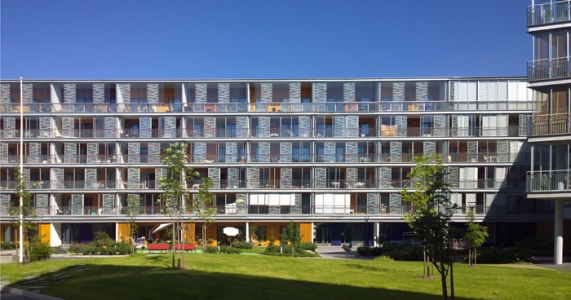 Jyväskylä (FI), 2007-2014 – Harjunkulma block © Asko Takala
Jyväskylä (FI), 2007-2014 – Harjunkulma block © Asko Takala
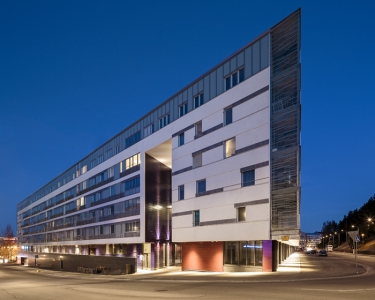 Jyväskylä (FI), 2007-2014 – Harjunkulma block © Tuomas Uusheimo
Jyväskylä (FI), 2007-2014 – Harjunkulma block © Tuomas Uusheimo